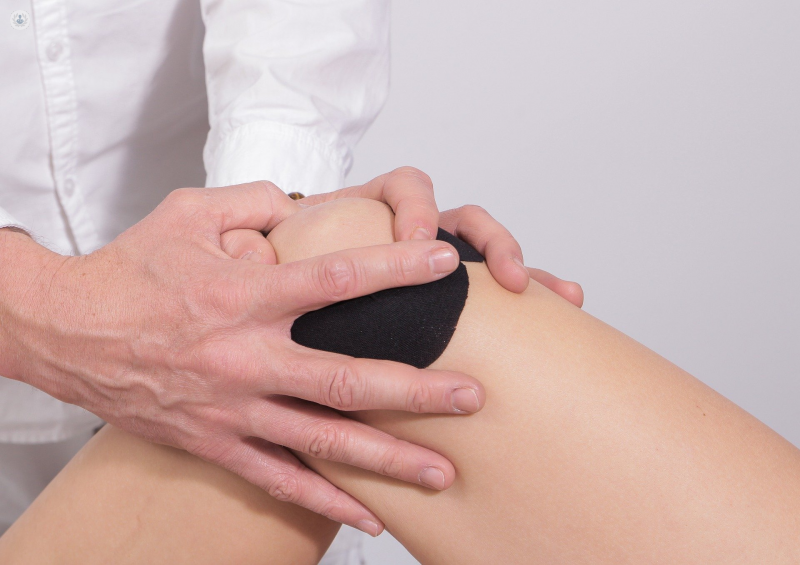A comprehensive overview of total and partial knee replacements
Written by:In our latest article, revered consultant orthopaedic surgeon, Professor Kuntal Patel, reveals the main differences between a total and partial knee replacement, and outlines the main risks associated with partial knee replacement.

What is the difference between a total knee replacement and a partial knee replacement?
Total knee replacement means replacing most, if not, all of your knee joint. So, when we say total knee replacement, there is an artificial metal component on the femur and on the tibia, and a plastic bearing in the middle. The kneecap either articulates on the metal femur, or we occasionally replace your kneecap with a plastic button as well.
A partial knee replacement, meanwhile, involves only replacing one of these three compartments mentioned above, most typically, the medial compartment, which is the most common part of the knee that tends to wear out in most people.
Is one safer than the other?
Both are safe procedures when performed correctly. The knee surgeon needs to perform adequate X-ray scans when deciding which of the two is the most suitable for the patient.
If a patient is very young, partial knee replacement fares better, and you have options to undergo a full total knee replacement in the future.
What are the main risks associated with a partial knee replacement?
There are two types of partial knee replacement: fixed bearing, and mobile bearing. So, with a fixed bearing, the plastic between the two metal components is locked into the tibia component, and it is moving around in a mobile bearing, but is wedged in.
If we are talking about a mobile-bearing partial knee replacement, there is a risk that this bearing material can dislodge if there is a twisting in the knee or if it not fully balanced.
There is a small risk (for both types of partial knee replacement) of infection, bleeding, or clots, but these risks are all very minimal. Patients can also experience bone healing issues or scar pain, but they normally settle down quite quickly.
Patients can also experience residual pain in their knee joint. It is important to note that patients who have undergone a partial knee replacement will need to undergo a total knee replacement eight to 10 years after having a partial knee replacement performed on them.
How exactly is a partial knee replacement operation performed?
It is generally performed as a minimally invasive procedure. There will be a reasonably small scar on the inner side of the kneecap down to the upper part of the shinbone that will be visible after the cut is made.
Then, we expose the joint through a reasonably small incision. We then check and confirm the patient’s suitability for a partial knee replacement. We then carefully measure both sides of the joint line and we remove small parts of bone from the femur and tibia, and fit in the components onto them.
These components are fixed onto the bone using cement, so that it is solid from day one.
What does recovery time involve?
Recovery time is a bit quicker when it comes to partial knee replacement when compared to a total one. Most patients are on crutches for the first three weeks after partial knee replacement surgery. Patients will be independently moving after three to six weeks.
With a total knee replacement, everything in this timeline is delayed three to four weeks longer when compared to a partial knee replacement.
Professor Kuntal Patel is a highly skilled consultant orthopaedic surgeon who specialises in both partial and total knee replacement surgery. Contact him today to book a consultation with him.


